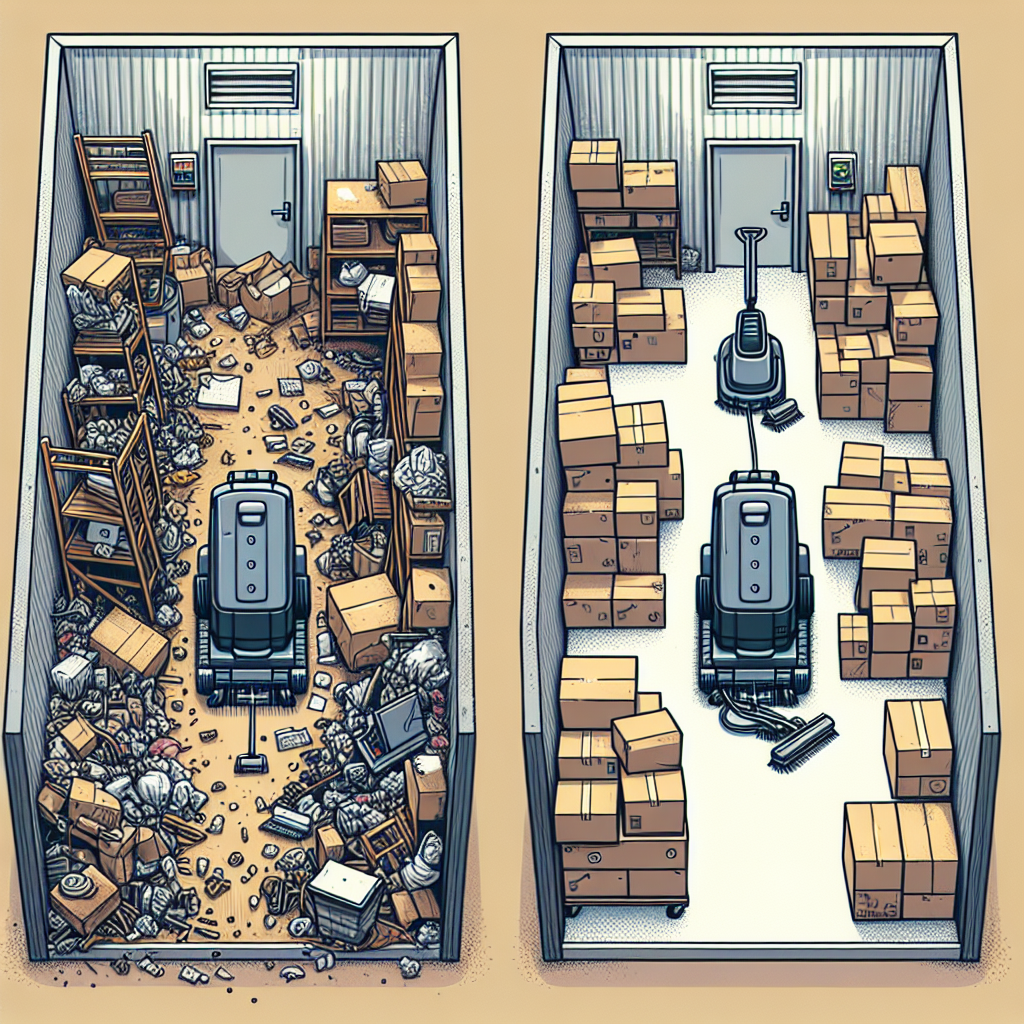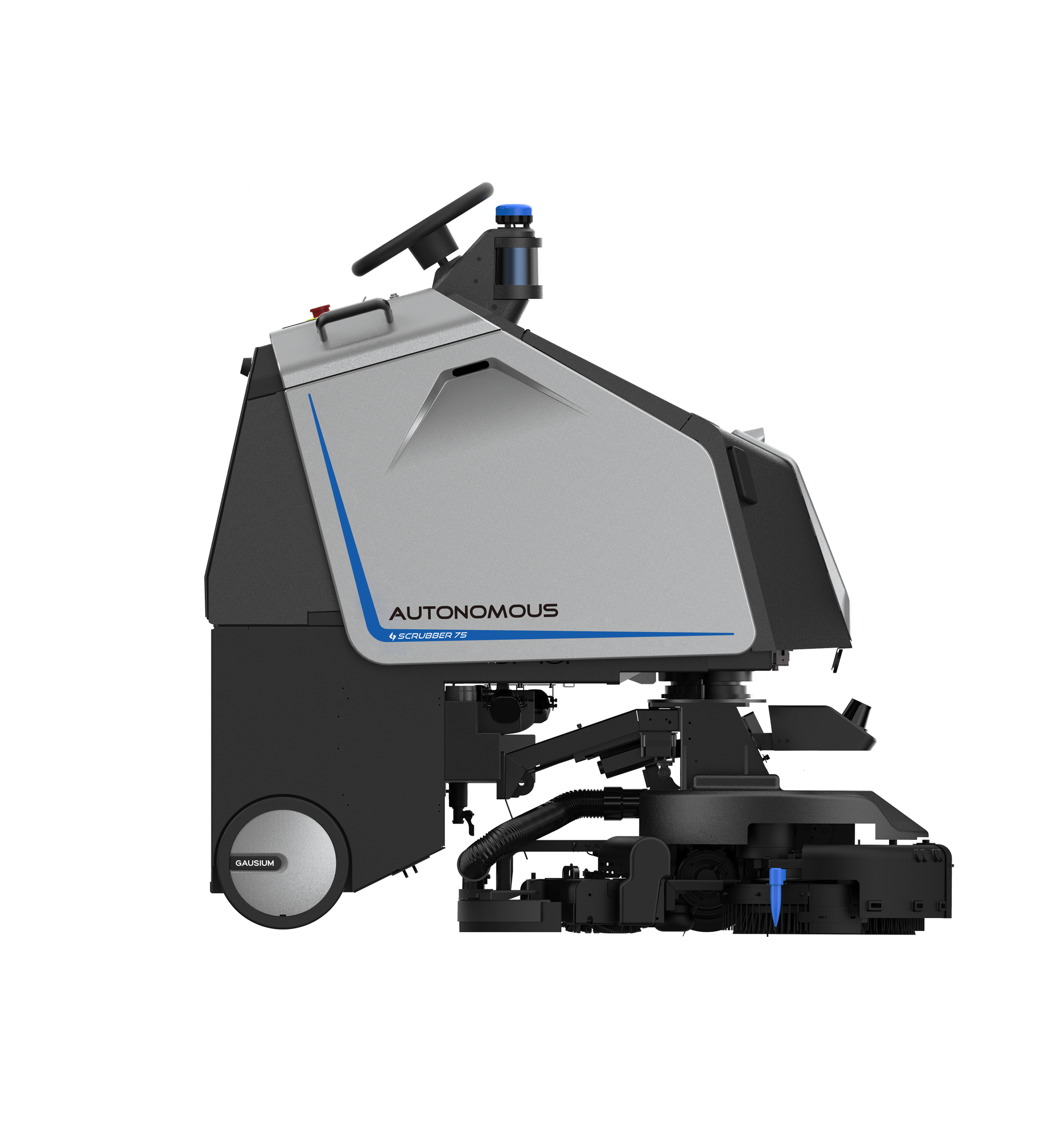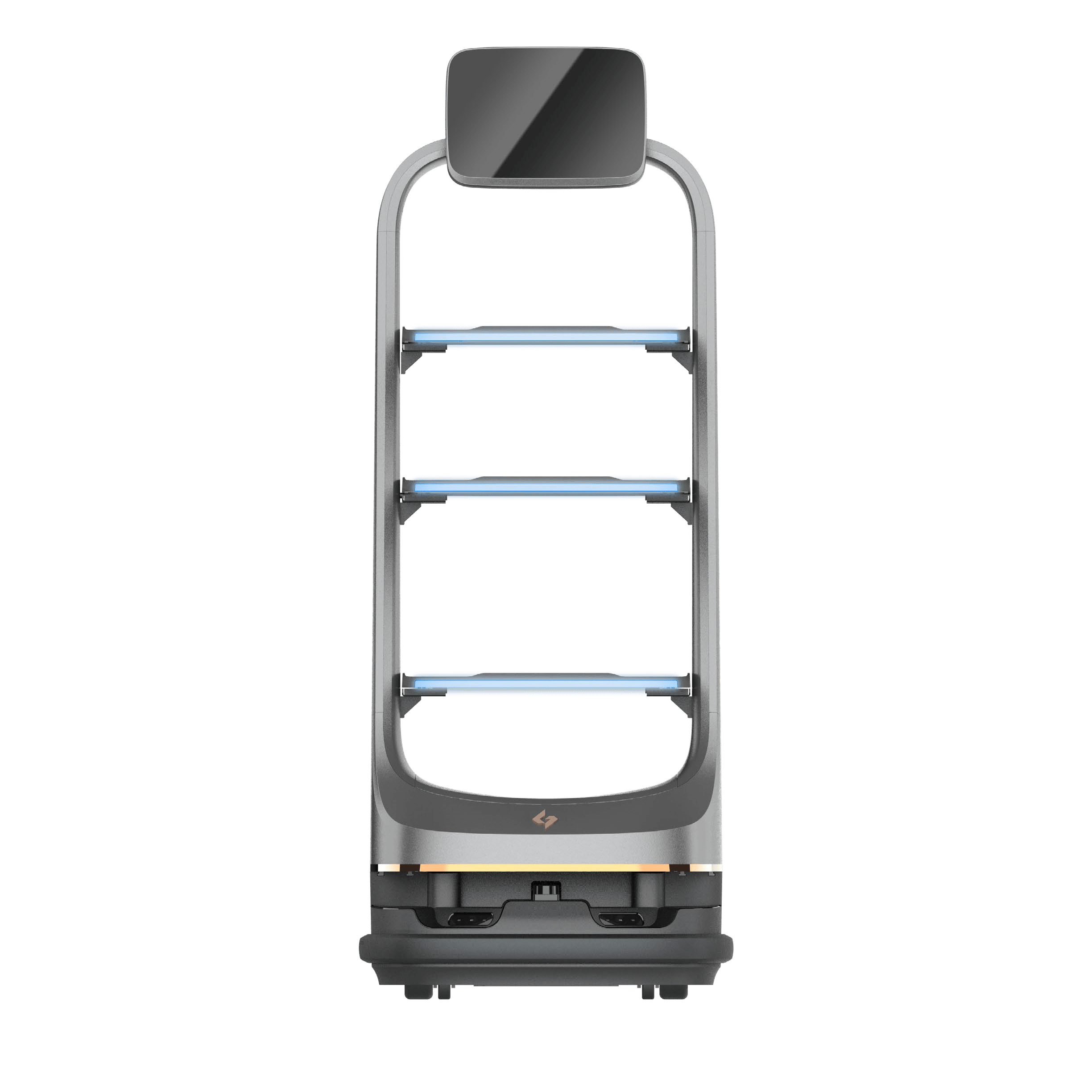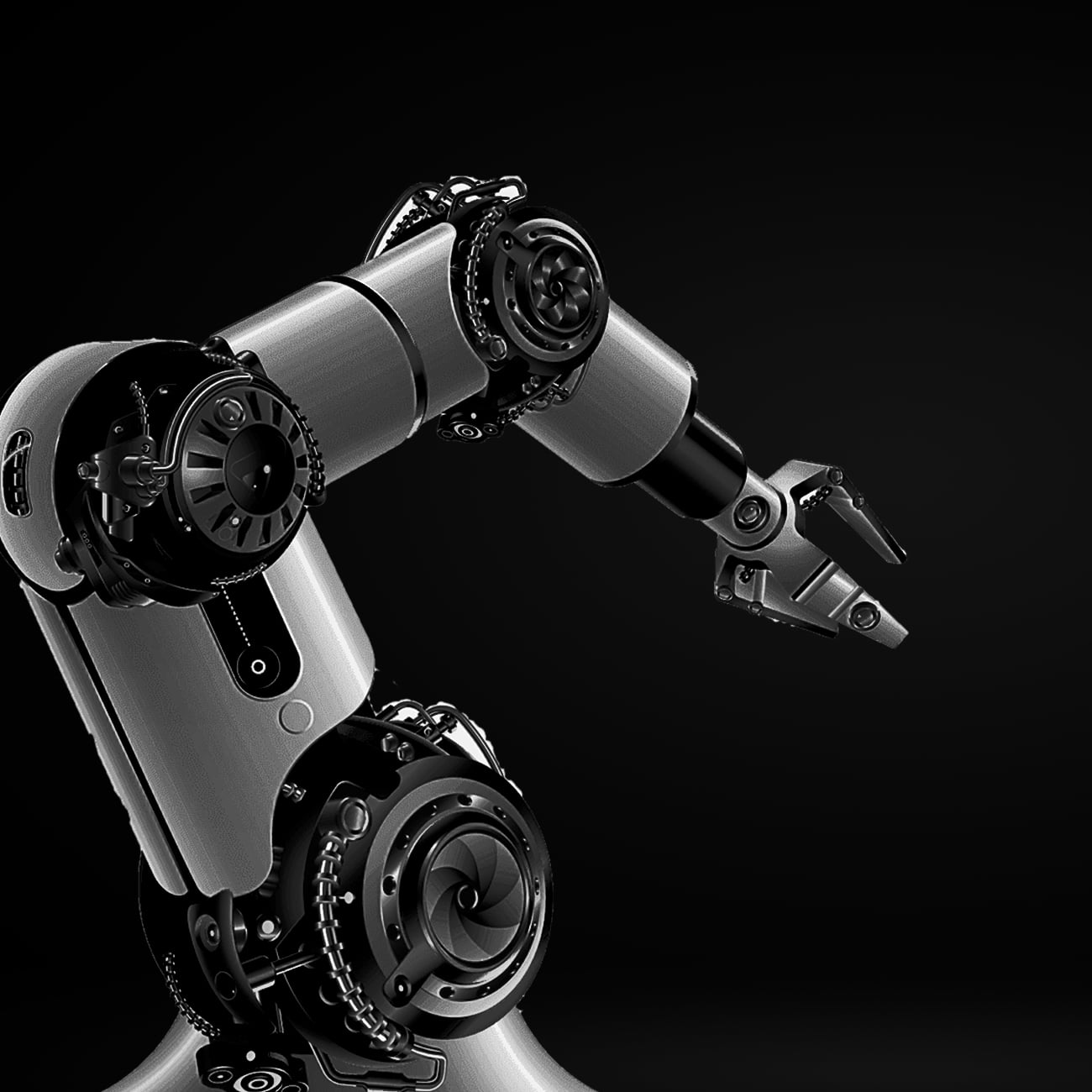-
Table of Contents
“Uncover Savings: Transform Your Warehouse with a Robotic Floor Cleaner and Eliminate Hidden Costs!”
A dirty warehouse floor can significantly impact operational efficiency, employee safety, and overall productivity. Accumulated dirt, debris, and spills not only create hazards but also contribute to equipment wear and tear, leading to increased maintenance costs. Additionally, a neglected floor can tarnish a company’s image and affect compliance with health and safety regulations. Implementing a robotic warehouse floor cleaner can address these hidden costs by ensuring consistent cleanliness, reducing labor expenses, and enhancing safety. By automating the cleaning process, businesses can focus on core operations while maintaining a pristine environment that supports efficiency and safety.
Negative Impact on Inventory Quality and Customer Satisfaction

A dirty warehouse floor may seem like a minor issue, but its implications can extend far beyond mere aesthetics, significantly impacting inventory quality and customer satisfaction. When dust, debris, and spills accumulate on the floor, they create an environment that can compromise the integrity of stored products. For instance, in warehouses that handle food items or pharmaceuticals, cleanliness is not just a matter of preference; it is a regulatory requirement. Contaminants on the floor can easily transfer to products, leading to spoilage or contamination, which can result in costly recalls and damage to a company’s reputation.
Moreover, the presence of dirt and grime can lead to increased wear and tear on inventory. For example, if heavy machinery or pallets are frequently moved across a dirty floor, the accumulation of debris can cause scratches or damage to the packaging of goods. This not only affects the visual appeal of the products but can also lead to functional issues, such as compromised seals or structural integrity. Consequently, businesses may find themselves facing higher return rates and increased customer complaints, which can erode trust and loyalty over time.
In addition to the direct impact on inventory, a dirty warehouse floor can also hinder operational efficiency. Employees working in a cluttered and unclean environment may find it challenging to locate items quickly, leading to delays in order fulfillment. This inefficiency can ripple through the supply chain, ultimately affecting delivery times and customer satisfaction. When customers experience delays or receive products that do not meet their expectations, their perception of the brand can be negatively influenced, leading to lost sales and diminished market share.
Furthermore, the psychological impact of a dirty warehouse should not be underestimated. Employees who work in a clean and well-maintained environment are generally more productive and motivated. Conversely, a dirty floor can create a sense of neglect and disorganization, which can demoralize staff and lead to decreased productivity. When employees feel that their workplace is not being cared for, their commitment to quality and service may wane, further exacerbating the issues related to inventory quality and customer satisfaction.
To address these challenges, many businesses are turning to robotic warehouse floor cleaners. These advanced machines offer a reliable solution for maintaining cleanliness without the need for extensive manual labor. By automating the cleaning process, companies can ensure that their warehouse floors are consistently clean, reducing the risk of contamination and damage to inventory. Additionally, robotic cleaners can operate during off-peak hours, allowing for uninterrupted workflow and minimizing disruptions to daily operations.
Implementing a robotic cleaning solution not only enhances the cleanliness of the warehouse but also contributes to a more efficient and productive work environment. As a result, businesses can improve their inventory quality, reduce the likelihood of customer complaints, and ultimately enhance customer satisfaction. In a competitive marketplace, where customer expectations are continually rising, investing in a robotic warehouse floor cleaner can be a strategic move that pays dividends in the long run. By prioritizing cleanliness and operational efficiency, companies can foster a positive brand image and build lasting relationships with their customers, ensuring sustained success in their industry.
Increased Maintenance Costs from Equipment Damage
A dirty warehouse floor may seem like a minor issue, but the implications of neglecting cleanliness can lead to significant, often hidden costs, particularly in terms of increased maintenance expenses stemming from equipment damage. When debris, dust, and spills accumulate on the floor, they create an environment that can be detrimental to the machinery and equipment used in daily operations. For instance, forklifts and pallet jacks are designed to operate efficiently on clean surfaces. However, when dirt and grime build up, these vehicles can experience increased wear and tear, leading to more frequent repairs and replacements. This not only disrupts workflow but also strains budgets, as the costs associated with maintenance can quickly escalate.
Moreover, the presence of contaminants on the floor can lead to mechanical failures. For example, if a forklift’s wheels become clogged with debris, it can affect the vehicle’s performance, causing it to operate less efficiently. This inefficiency can result in higher fuel consumption and increased operational costs. Additionally, if the equipment is not functioning optimally, it may lead to accidents or injuries, further compounding costs through potential liability claims and worker compensation expenses. Therefore, maintaining a clean warehouse floor is not merely a matter of aesthetics; it is a crucial aspect of operational efficiency and safety.
Transitioning from the immediate effects of a dirty floor, it is essential to consider the long-term implications for a business’s bottom line. Regular maintenance and repairs can quickly add up, diverting funds that could be better utilized for growth initiatives or technological advancements. Furthermore, the time spent on equipment downtime due to maintenance issues can lead to lost productivity, which ultimately impacts revenue. In a competitive market, where efficiency is key, any disruption can have far-reaching consequences.
To mitigate these hidden costs, businesses are increasingly turning to innovative solutions such as robotic warehouse floor cleaners. These advanced machines are designed to maintain cleanliness with minimal human intervention, ensuring that floors remain free of debris and spills. By automating the cleaning process, companies can significantly reduce the risk of equipment damage caused by a dirty environment. Robotic cleaners operate consistently and efficiently, providing a level of cleanliness that manual cleaning may struggle to achieve, especially in larger warehouses.
Moreover, the integration of robotic cleaners into warehouse operations can lead to a more proactive approach to maintenance. With regular cleaning schedules, the wear and tear on equipment can be minimized, extending the lifespan of machinery and reducing the frequency of repairs. This proactive maintenance not only saves money but also enhances safety by reducing the likelihood of accidents caused by equipment malfunction.
In conclusion, the hidden costs associated with a dirty warehouse floor, particularly in terms of increased maintenance expenses from equipment damage, can have a profound impact on a business’s operational efficiency and financial health. By investing in robotic warehouse floor cleaners, companies can address these issues head-on, ensuring a cleaner environment that promotes safety, efficiency, and ultimately, profitability. As the industry continues to evolve, embracing technology to maintain cleanliness will be a critical factor in sustaining competitive advantage and fostering long-term success.
Decreased Employee Productivity Due to Safety Hazards
A clean warehouse floor is often overlooked in discussions about operational efficiency, yet its condition can significantly impact employee productivity. When a warehouse floor is dirty, it can create a myriad of safety hazards that not only endanger workers but also disrupt workflow. For instance, spills, debris, and clutter can lead to slips, trips, and falls, which are among the most common workplace accidents. These incidents not only pose a risk to employee safety but also result in lost time and increased costs associated with injury claims and worker compensation. Consequently, the presence of safety hazards on the warehouse floor can create an environment of anxiety and distraction, further diminishing employee productivity.
Moreover, when employees are constantly on alert for potential hazards, their focus shifts from their primary tasks to navigating a perilous environment. This shift in focus can lead to decreased efficiency, as workers may take longer to complete their tasks or may avoid certain areas of the warehouse altogether. In addition, the time spent addressing safety concerns—whether it be cleaning up spills or reporting hazards—can detract from the time available for productive work. As a result, the overall output of the warehouse can suffer, leading to missed deadlines and decreased customer satisfaction.
In light of these challenges, it becomes evident that maintaining a clean warehouse floor is not merely a matter of aesthetics; it is a critical component of operational efficiency. One effective solution to this problem is the implementation of a robotic warehouse floor cleaner. These advanced machines are designed to autonomously clean large areas, ensuring that the floor remains free of debris and spills. By utilizing robotic cleaners, warehouses can significantly reduce the risk of accidents, thereby fostering a safer work environment.
The introduction of robotic cleaners not only enhances safety but also allows employees to focus on their core responsibilities. With the burden of floor maintenance lifted, workers can dedicate their time and energy to more value-added tasks, such as inventory management or order fulfillment. This shift can lead to a more engaged workforce, as employees feel empowered to contribute to the overall success of the operation without the constant distraction of safety concerns.
Furthermore, robotic cleaners are equipped with advanced technology that enables them to perform thorough cleaning tasks more efficiently than traditional methods. They can navigate complex warehouse layouts, reach tight spaces, and operate during off-peak hours, ensuring that the floor is consistently maintained without disrupting daily operations. This level of efficiency not only enhances safety but also contributes to a more organized and productive work environment.
In conclusion, the hidden costs of a dirty warehouse floor extend far beyond mere aesthetics; they encompass significant impacts on employee productivity due to safety hazards. By investing in a robotic warehouse floor cleaner, businesses can mitigate these risks, creating a safer and more efficient workplace. As a result, employees can concentrate on their tasks without the looming threat of accidents, ultimately leading to improved operational performance and enhanced customer satisfaction. In an era where efficiency and safety are paramount, the adoption of robotic cleaning technology represents a strategic move toward achieving these critical business objectives.
Q&A
1. **What are the hidden costs associated with a dirty warehouse floor?**
Hidden costs include increased safety hazards leading to accidents, higher cleaning and maintenance expenses, reduced employee productivity, and potential damage to inventory due to spills or debris.
2. **How can a dirty warehouse floor impact employee morale?**
A dirty environment can lead to decreased employee morale, as workers may feel undervalued and less motivated in an unclean workspace, which can ultimately affect overall productivity and job satisfaction.
3. **What advantages does a robotic warehouse floor cleaner offer?**
A robotic warehouse floor cleaner provides consistent cleaning, reduces labor costs, minimizes human error, enhances safety by maintaining a clean environment, and allows employees to focus on more critical tasks.A dirty warehouse floor can lead to increased safety hazards, reduced employee productivity, and higher maintenance costs, ultimately impacting overall operational efficiency. Implementing a robotic warehouse floor cleaner can significantly mitigate these hidden costs by ensuring consistent cleanliness, enhancing safety, and allowing staff to focus on more critical tasks. By investing in automation for floor cleaning, warehouses can improve their operational effectiveness and create a safer, more productive work environment.
Discover the hidden costs of a dirty warehouse floor and how a robotic warehouse floor cleaner can transform your operations. Don’t let cleanliness take a backseat—invest in efficiency and safety today! Learn more about the benefits of robotic cleaning solutions [here](https://gausium.com/2025/03/24/robotic-warehouse-floor-cleaner/).




